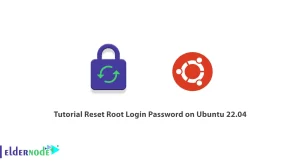
Umami is an open source web analytics program. It focuses on simplicity, is well-designed, fast and privacy-focused. Umami is written in Node.js and is a self-hosted web analytics alternative to Google Analytics that focuses on privacy. Umami can store data about your website visitors in a MySQL or PostgreSQL database. In this article, we are going to teach you How to Install and Uninstall Umami on Ubuntu 20.04. You can visit the packages available in Eldernode if you wish to purchase a Linux VPS server.
Table of Contents
Tutorial Install and Uninstall Umami on Ubuntu Linux
Install Umami on Ubuntu 20.04 | Ubuntu 21.04
The repository will be downloaded in the /opt folder.
cd /optNow you should clone the repository from GitHub by entering the following command:
sudo git clone https://github.com/mikecao/umami.gitAll the software and configuration files will be located in /opt/umami. Then go to the newly created umami directory:
cd umamiAt this step, you need to update the project docker-compose.yml file. This file is what it uses to configure and launch multiple Docker containers simultaneously. You have to change two options in this file: The IP that Umami binds to, and a random hash that is used as salt when encrypting things in the database.
Next step, generate a new random hash to paste into the file. To do this, enter the following command:
openssl rand -base64 32The openssl command is used to generate 32 random characters. You should first copy the output to your clipboard and then open the configuration file with the following command:
sudo nano docker-compose.ymlNow you should find the HASH_SALT option and delete the placeholder text. Then remember to paste in the random hash by entering the following command:
HASH_SALT: replace-me-with-a-random-stringThen you should find the ports:
ports: - "127.0.01:3000:3000"To update the value “3000:3000”, you should just add 127.0.0.1: to it. This ensures that Umami is not publicly available and only listens on the localhost interface.
Even with a UFW firewall set up, due to some quirks in how the Docker network works if you did not do this step, your Umami container would be available to the public on port 3000.
Now you should save the file by pressing on CTRL+O and then ENTER in nano. Finally, close out of your editor by pressing on CTRL+X.
At this stage, you need to set up your two containers. To do this, you can use the following command:
sudo docker-compose up --detachDocker-compose create containers in the background, detached from the terminal session by announcing the –detach flag:
Creating umami_db_1 ... doneCreating umami_umami_1 ... doneYou can verify to fetch the homepage of your new Umami container running on localhost by using the following command:
curl localhost:3000Output:
<!DOCTYPE html><html><head><meta charSet="utf-8"/> . . .If a large chunk of HTML is output to your terminal, it indicates that the Umami server is up and running.
Configure Nginx on Ubuntu Linux
First, update your package list with the following command:
sudo apt updateand now you can install Nginx by entering the following command:
sudo apt install nginxNext, you need to allow ports 80 and 443 for traffic. To do this, use the “Nginx Full” UFW application profile:
sudo ufw allow "Nginx Full"Output:
Rule addedRule added (v6)Now you should open a new Nginx configuration file in the /etc/nginx/sites-available directory:
sudo nano /etc/nginx/sites-available/umami.confThen paste the following into the new configuration file. Remember to replace your_domain_here with the domain you configured to point to your Umami server.
server { listen 80; listen [::]:80; server_name your_domain_here; access_log /var/log/nginx/umami.access.log; error_log /var/log/nginx/umami.error.log; location / { proxy_pass http://localhost:3000; proxy_set_header X-Real-IP $remote_addr; proxy_set_header Host $host; proxy_set_header X-Forwarded-For $proxy_add_x_forwarded_for; } }The above configuration is HTTP-only, as you allow Certbot to configure SSL in the next step. The configuration of logging locations is set up and then passes all traffic to http://localhost:3000.
Now you should save the file and close it.
Then you need to link the configuration to /etc/nginx/sites-enabled/ to enable it. To do this, enter the following command:
sudo In -s /etc/nginx/sites-available/umami.conf /etc/nginx/sites-enabled/In this step, verify the correct syntax of the configuration file by executing the following command:
sudo nginx -tOutput:
nginx: the configuration file /etc/nginx/nginx.conf syntax is oknginx: configuration file /etc/nginx/nginx.conf test is successfulFinally, you have to reload the nginx service to pick up the new configuration. To do this, run the following command:
sudo systemctl reload nginxUmami site is available with simple HTTP. If you load http://your_domain_here.
How to Install Certbot and Set up SSL Certificates
First, you should install Certbot and its Nginx plugin by entering the following command:
sudo apt install certbot python3-certbot-nginxYou should run certbot in –nginx mode and specify the same domain that you used in the Nginx server_name configuration. To do this, use the following command:
sudo certbot --nginx -d your_domain_hereNow you should agree to the Let’s Encrypt terms of service and enter your email address.
Then you can redirect all HTTP traffic to HTTPS, which is safe to do.
Next, Let’s Encrypt confirm your request and your certificate will be downloaded by Certbot.
You should test your configuration at:
https://www.ssllabs.com/ssltest/analyze.html?d=umami.example.comNginx is automatically reloaded by Certbot to pick up the new configuration and certifications. Now reload your site and if you select the redirect option, it will automatically switch you over to HTTPS.
How to Uninstall Umami on Ubuntu 20.04 | Ubuntu 21.04
Umami will be removed from your system by entering the following command.
sudo apt-get remove umamiConclusion
In this article, you learned how to install and uninstall umami on Ubuntu 20.04. In fact, The Umami application and the PostgreSQL database were launched using Docker Compose, Then an Nginx reverse proxy was launched. Finally, you were able to secure it with Let’s Encrypt SSL certificates.




